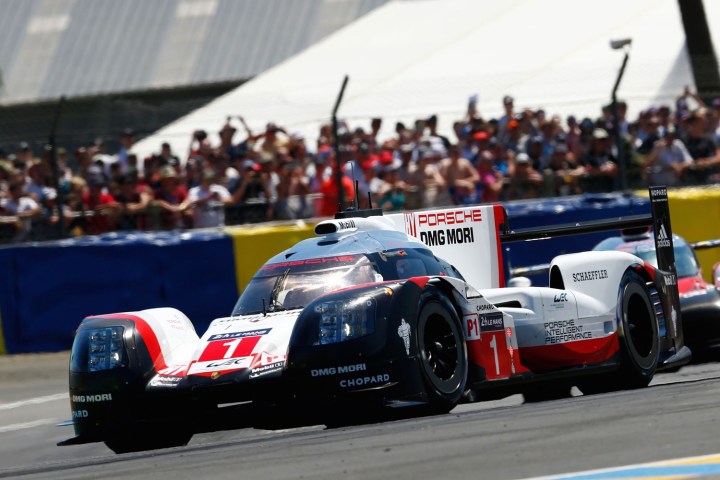
In a major change of strategy, Porsche will downsize its Le Mans program, and join the Formula E electric racing series beginning in 2019. Porsche will no longer race in the top LMP1 class, which includes purpose-built hybrid race cars that vie for overall wins. But it will continue to race in the GT classes for production-based cars with its 911 at Le Mans, as well as the rest of the FIA World Endurance Championship (WEC), and the IMSA WeatherTech SportsCar Championship.
Porsche’s move is both shocking and predictable. The automaker’s current LMP1 effort has been very successful. Porsche returned to the top-tier category at Le Mans in 2014, and won the race in 2015, 2016, and 2017. It also has multiple FIA WEC driver and manufacturer championships to its credit. But times change.
The immense cost of fielding an LMP1 effort may have led to its downfall. Porsche parent Volkswagen is being squeezed by its ongoing diesel-emissions scandal, which has already forced corporate cousin Audi to cancel its Le Mans program. Like Porsche, Audi will focus on the less-expensive Formula E series from now on. Earlier this week, Mercedes-Benz announced it would leave the popular German DTM series to join Formula E.
The attractiveness of a race series for electric cars to marketers also shouldn’t be underestimated. While Formula E is smaller and less prestigious than the WEC, and the cars are in many ways less sophisticated than Porsche’s mighty 919 Hybrid Le Mans racer, Formula E may be more relevant from a marketing standpoint.
When the current Le Mans program started, Porsche was all about plug-in hybrids. Its flagship supercar was the plug-in hybrid 918 Spyder, and it had just launched the first plug-in hybrid versions of the Cayenne and Panamera. But now Porsche is shifting its focus to all-electric cars. It will launch an electric sedan based on the 2015 Mission E concept before the end of the decade.
Porsche’s departure leaves only Toyota competing in the top LMP1 class. If nothing else, Toyota will likely get its long-sought Le Mans victory next year although, with no direct competition, it will be a hollow one. Le Mans organizers may have to rewrite the rules in order to bring costs down, and attract more manufacturers.
If the future of Le Mans is up in the air, so are the futures of the many drivers and engineers in the Porsche Le Mans program. Most of them won’t be needed in Formula E. However, Porsche said it will “keep the successful LMP1 team fully intact, including the factory drivers.” It will try to find places for them in Formula E and other racing series.


